The use of tableaux—actors posed in frozen scenes—is one of the most effective methods for staging a story from the Bible quickly. The basic technique is simple: A narrator reads the text in short segments as the performers move from picture to picture without speaking. The technique is even more engaging when the members of the congregation are invited to close their eyes between each picture—an invitation that can be extended with the following instructions:
Narrator: The following story from the Bible will be presented as a series of frozen scenes or tableaux. We ask for your help in this way: When you hear this tone—[use a hand bell or a musical triangle to make a chime]—please close your eyes, bow your heads, and listen as part of the text is read. When you hear the tone a second time—[make the chime again]—open your eyes to view the scene. When you hear the tone a third time, again close your eyes and listen as more of the story is told . . . and continue that way through the reading. When you hear a tone, you’ll either close your eyes to listen, or open your eyes to view the scene. [make the chime again]—Please close your eyes.
At this point, the performers move into position for the first tableau as the narrator reads the appropriate portion of the text. When the actors are “frozen” in position, the narrator makes the chime and the congregation opens their eyes to view the first scene. After a count of about ten seconds, the narrator again makes a chime, and the congregation closes their eyes as the next segment of text is read. When done correctly, the members of the congregation will always have their eyes closed during the narration as the actors change position. In fact, the congregation should never see the actors moving, and there will be an element of surprise when they open their eyes to see each picture.
Music may enhance the presentation greatly, setting the tone for the story and tying the scenes together. Improvisational piano, flute, violin, cello, or guitar work well, especially when the musician is sensitive enough to match the music to the progress of the story. The instrumental list should play continuously from the moment the congregation closes their eyes for the first time until all the actors have exited after the last tableau.
Almost any actor can successfully perform in a tableau, as long as he or she can hold still. (The technique works best with performers who are in fifth grade and above, although younger children can be a part of a presentation if they are mixed in with adults.) A “freeze” will be most effective, however, if the performers follow three guidelines:
- Use big expressions. It’s hard to overact when you’re not moving.
- Be caught in the middle of an action. Even though you’re absolutely still, there can be energy in your pose.
- Pick a point to look at. Your eyes should be focused on one thing without shifting.
Once the actors have mastered the art of freezing, it’s time to create the pictures that will tell the story. It’s usually best to limit the presentation to six to ten tableaux. A good director can make these tableaux more interesting by adhering to the following principles:
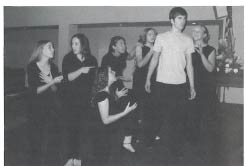
1. The characters in the picture should be interacting with each other. One character might be whispering in the ear of another, or touching the shoulder of another, or pointing to another—but there must be some kind of visible relationship between the characters.
Narrator: As Jesus and his disciples, together with a large crowd, were leaving the city, a blind man, Bartimaeus (that is, the Son of Timaeus), was sitting by the roadside begging.
2. A picture is always more interesting if it has variety—especially a variety of levels. Each actor should be in a different position than the actor next to him or her. If one is standing, the other could kneel. If one is kneeling, the other might lie down. Add levels by using steps, chairs, boxes, or even stepladders. There should never be three people in a row in the same position.
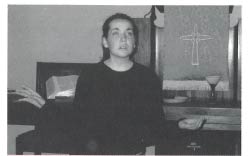
Narrator: When Bartimaeus heard that it was Jesus of Nazareth, he began to shout, “Jesus, Son of David, have mercy on me."
3. Each picture should have a point of focus—that is, a point where you want to direct the audience’s attention. The easiest way to force a point of focus is to have everyone on stage focus on the same point.
Narrator: There were many in the crowd who rebuked Bartimaeus, telling him to be quiet.
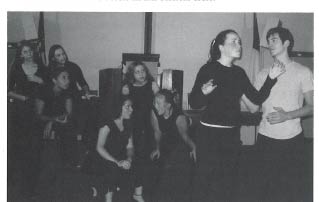
4. Presenting a story with tableaux works best with groups of eight to twenty people. Miracle stories with crowd scenes work particularly well with the technique. The final effect can be enhanced considerably by requiring all the actors to wear dark solid colors—preferably black—so that facial expressions and body positions stand out.
Narrator: But Bartimaeus shouted out all the more, “Son of David, have mercy on me!”
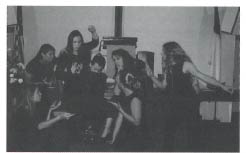
5. If Jesus is a character in the story, you might consider dressing the actor playing the role in a different color—off-white or tan—so the audience can recognize him quickly. Of course, it is also possible to costume the actors in full biblical dress.
Narrator: When Jesus heard Bartimaeus shouting, he stopped and said, “Call him.” So the crowd called to the blind man, “Cheer up! On your feet! He’s calling you.” Bartimaeus left his place and came to Jesus. And Jesus asked him, “What do you want me to do for you?
6. When rehearsing the presentation, make sure to instruct the actors to remain frozen until they hear narration. Most performers will tend to move as soon as they hear the chime signaling the end of a scene. Since it takes a second or two for the members of the audience to close their eyes, if the actors break their freeze immediately, they will be caught moving.
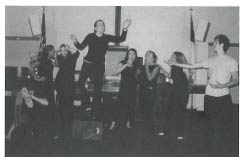
Narrator: Bartimaeus said, “Rabbi, I want to see.” “Go,” said Jesus, “your faith has healed you.” Immediately he received his sight, and followed Jesus along the road.
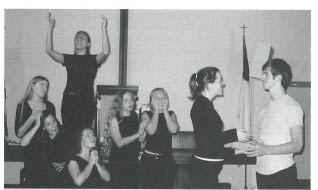
Telling a story with tableaux can be surprisingly powerful, and the simplicity of the technique makes it an ideal choice for beginners. Even with limited rehearsal time and experience, a group of actors can successfully reach a level of excellence in their performance.
__________
For additional material from the Calvin Institute of Christian Worship, click here.

